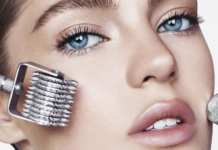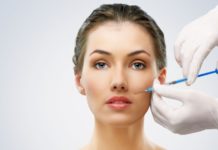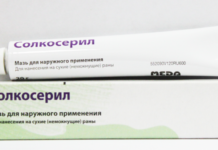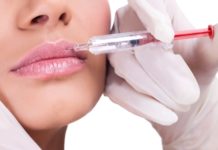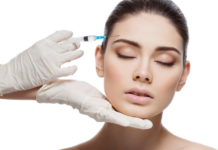Acne on the chin in women, the causes of which we will consider in this article, cause discomfort, spoil the aesthetic appearance of the face and can have unpleasant consequences. On the other hand, skin rashes reflect the state of human health and suggest what you need to pay attention to.
Material Content:
What indicate acne on the chin
Acne (acne, acne) occurs due to hypersecretion of the sebaceous glands, which are most in the head area. Excess fat, along with dirt, desquamated skin cells clog pores. As a result, acne with black dots-gum, small pustules or bubble rash are formed. They are non-inflammatory in nature and the first thing they indicate is improper skin care.
Small pimples with white dots indicate an increase in the female body's level of the male hormone testosterone. According to acne that has arisen on dry skin, it can be assumed about the course of the inflammatory process inside the body or about vitamin deficiency. The appearance of rosacea (rosacea) is a sign that a persistent expansion of the vessels of the face has occurred.
If large acne is not stopped by anti-acne agents, they can indicate infection with a tick by demodex or worms, including roundworms, giardia, toxocara, dirofilaria, trichinella.
Subcutaneous
The skin on the chin is thicker than on other parts of the face. This explains why acne appears under the skin in this area more often than on the cheeks: it is more difficult for pus to go outside. The occurrence of internal acne means that fat secretion has accumulated in the sebaceous ducts.When microbes get there, an inflammatory process developed, which sank into the thickness of the dermis and captured the hair follicle with the surrounding tissues.
Internal acne looks like a small hard growth (sometimes they are called boils). They ripen for 2-3 weeks, gradually become painful, cause severe itching and come in two forms:
- Red pimple. It is formed as a result of edema of inflamed tissues.
- Pustules, or abscesses, flesh-colored, surrounded by red skin. Their appearance means that pus is contained in the thickness of the dermis. If the color of the subcutaneous abscess becomes yellow-green, this indicates a secondary infection, which requires a visit to a dermatologist and special treatment.
Subcutaneous acne on the chin, associated with improper functioning of the sebaceous glands, indicate a malfunction in the body. Their appearance on the lower part of the face may indicate a pathology of the organs of the gastrointestinal tract, genitourinary or endocrine system.
The cause of acne on the chin in women
There are common causes of acne, regardless of age and gender, which include:
- Skin diseases accompanied by a malfunction of the sebaceous glands (for example, sebum secretion increases with seborrhea).
- Mechanical damage to the sebaceous gland (when extruding blackheads).
- Taking hormonal drugs, anabolics or steroids. Demodexes are subcutaneous ticks. They multiply under the skin, in the sebaceous glands, causing inflammatory processes.
- Immunity violation.
- Friction on the skin of the chin of scarves, collars, a mobile phone (it is recommended to periodically wipe it with alcohol).
- The influence of adverse environmental conditions.
- Genetic predisposition.
In addition, specific causes are characteristic of women:
- gynecological diseases;
- use of cosmetics;
- emotional stress, stress;
- the habit of touching the chin with hands that are not always clean.
But more often in women, acne under the skin is formed as a result of hormonal imbalance that occurs during puberty, pregnancy, lactation and menopause.
People's advice:calendula tincture for acne and blackheads
With hormonal failure
Impaired pituitary and ovarian function leads to increased production of male and female sex hormones (testosterone and estrogen). These substances lead to hyperfunction of the sebaceous glands associated with hair follicles, which sensitively detect changes in the hormonal background.
Pregnancy or the postpartum period
When a woman carries a child, the production of hormones necessary for the normal course of pregnancy and the development of the fetus increases in her body: progesterone, growth hormone somatotropin, insulin, prolactin and many others. Some of them continue to be developed intensively when a woman is breast-feeding a baby. Hormones stimulate hyperfunction of the sebaceous glands, causing pimples to appear on the chin and other areas of the face.
Gastrointestinal diseases
If the gallbladder, liver, pancreas, stomach or intestines are disturbed, incomplete digestion of food occurs. This leads to the formation of harmful substances that partially escape through the skin. This process is accompanied by rashes.
Malnutrition
The violation of metabolism contributes to the abuse of the following foods:
- salty;
- oily;
- acute
- excessively sweet;
- containing dyes and preservatives.
In violation of lipid metabolism in the blood, the level of triglycerides increases. Because of this, the sebaceous glands intensely secrete a secret, which causes the appearance of acne on the chin.
Premenstrual syndrome
The appearance of subcutaneous acne before menstruation, which disappear after its end, is a normal physiological phenomenon.
The reason is a temporary increase in progesterone levels.
For colds and bacterial infections
Conditionally pathogenic microorganisms, which include staphylococci and streptococci, constantly live on the skin and in the human body. Cocci do not cause harm to health until favorable conditions arise for them, caused by a weakening of immunity. Then their development begins, and inflammatory processes occur, accompanied by the appearance of purulent pustules on the skin.
Inadequate facial skin care
Improper facial skin care is as follows:
- the use of cosmetics that are not suitable for the type of skin;
- abuse of foundation and powder;
- frequent facial peelings;
- squeezing subcutaneous acne;
- insufficient cleansing of the skin from makeup, especially at night.
Rashes on the chin occur if often and for a long time be in a room with dry, dirty air.





